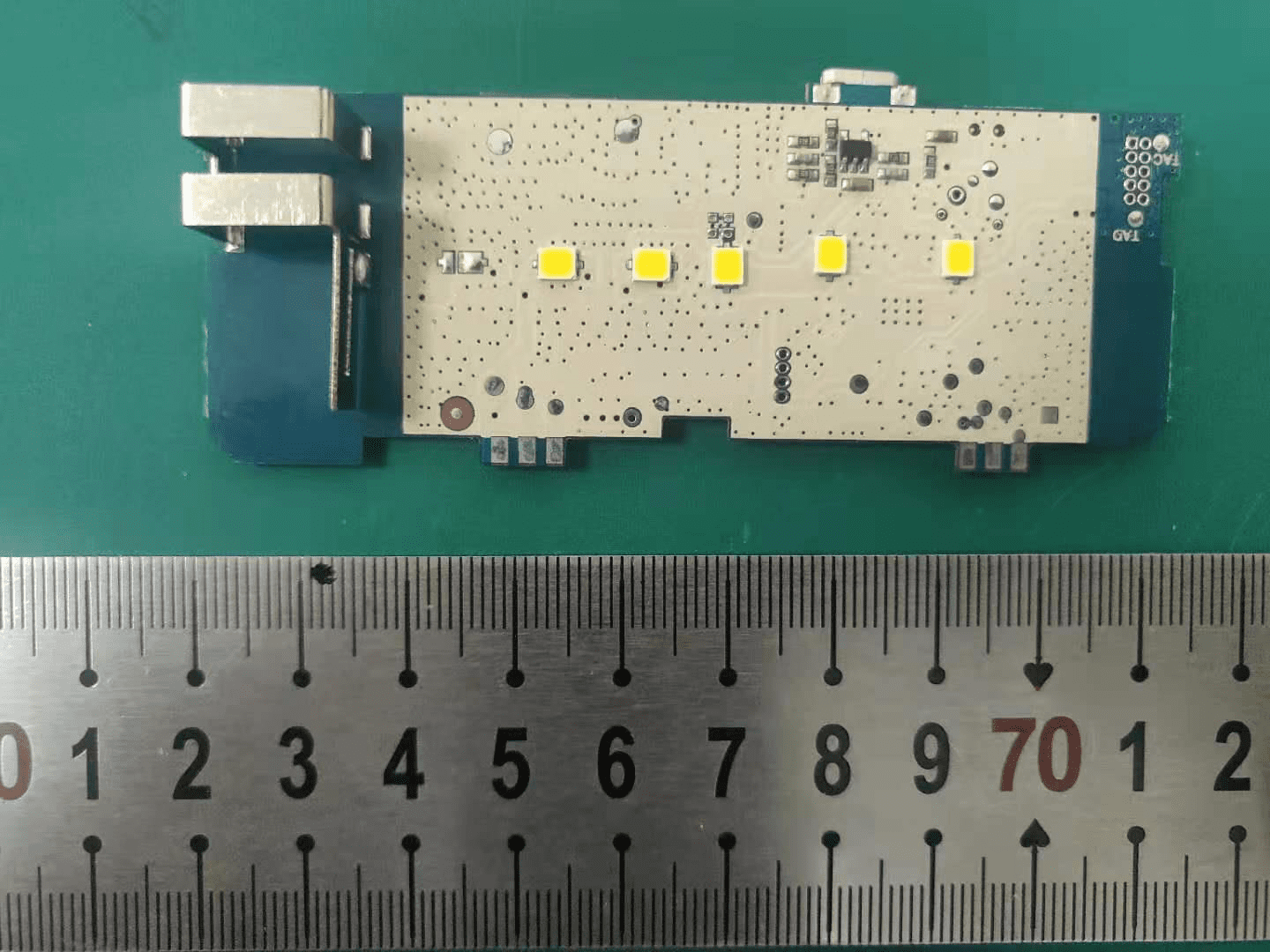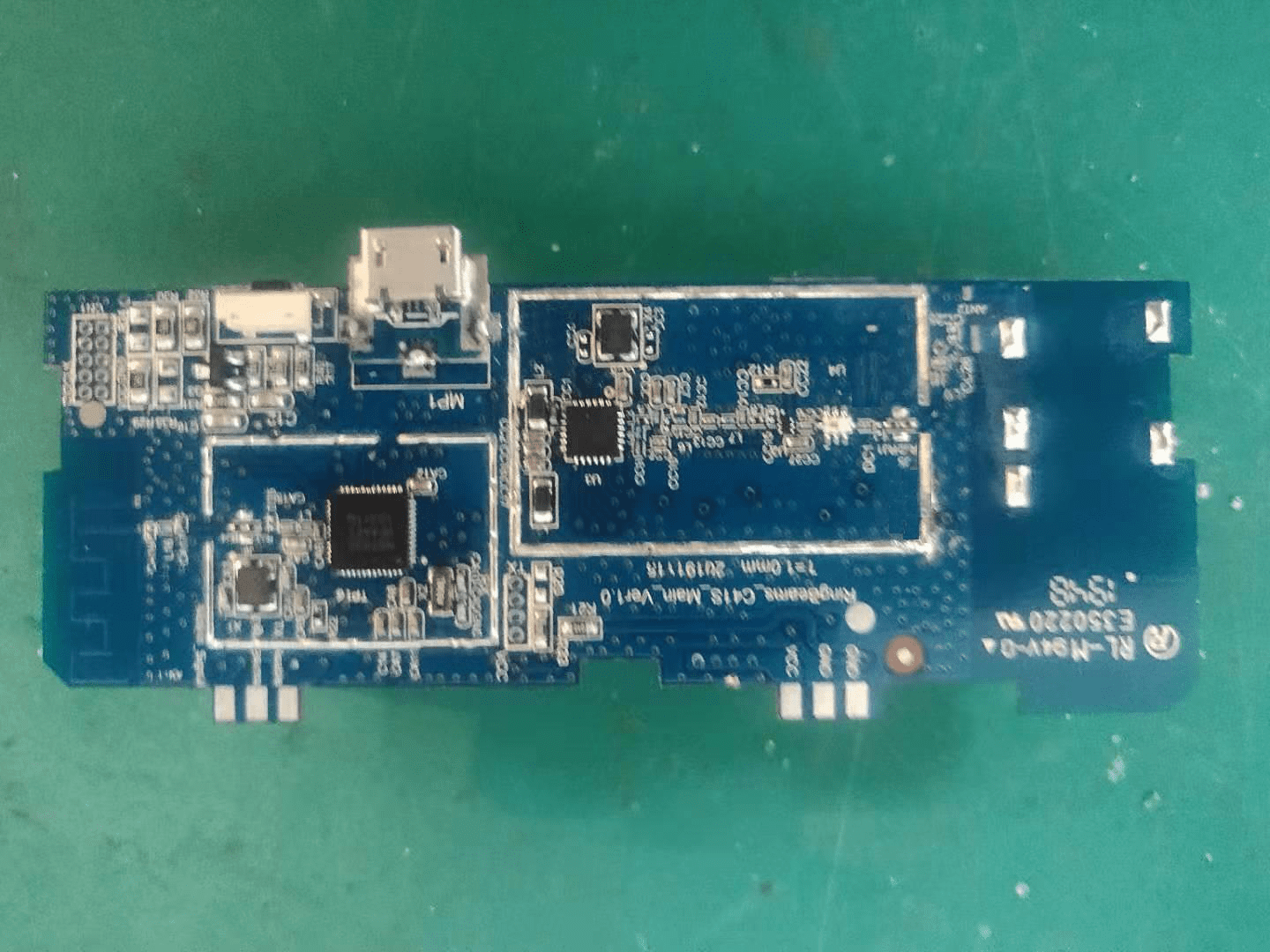Introduction
The Solar Steplight by Ring LLC is engineered to provide energy-efficient, smart illumination for outdoor spaces, blending robust construction with seamless wireless control. Designed for homeowners and outdoor technology enthusiasts, this device leverages solar power and smart connectivity to enhance safety and ambiance on steps, walkways, and patios. With FCC certification under FCC ID 2AEUPRBDS001, the Solar Steplight meets stringent US regulatory standards for radio frequency (RF) emissions, ensuring it is both legal to market and safe for everyday use.
This article delivers an authoritative, in-depth analysis of the Solar Steplight’s key features, technical specifications, operating frequencies, and internal components—based on close examination of component photographs and insights from regulatory filings. We’ll dissect the wireless technologies at play, explore teardown findings, and highlight the regulatory compliance journey that brings this smart outdoor lighting solution to market.
Key Features & Specifications
The Solar Steplight by Ring LLC is a testament to modern smart lighting, combining solar efficiency, smart home integration, and rugged outdoor design. Here’s a detailed breakdown of its features and technical specs, revealing the device’s practical benefits and engineering choices:
Key Features
- Solar Powered
- Harnesses sunlight for eco-friendly, off-grid operation, reducing energy costs and maintenance.
- Mounting Plate for Installation
- Includes a robust mounting plate, simplifying attachment to a variety of surfaces.
- Versatile Surface Compatibility
- Designed for installation on wood, stucco, brick, or siding, broadening deployment possibilities.
- Easy Installation
- Streamlined setup process, ideal for DIY homeowners and professional installers alike.
- Micro USB Charging
- Equipped with a micro USB port for convenient charging and firmware updates, ensuring reliable performance even in low-sunlight conditions.
- Works with Ring App
- Integrates seamlessly with the Ring app, enabling remote control, scheduling, and smart automation.
- Rechargeable Lithium-Ion Battery
- Features a built-in lithium-ion battery for energy storage, supporting continuous operation through cloudy days or at night.
- Smart Lighting Integration via Ring Bridge
- Connects to the Ring Bridge for advanced smart features, such as linking with other Ring devices, group control, and voice assistant compatibility.
Technical Specifications
- Battery: Rechargeable lithium-ion (included)
- Charging Port: Micro USB
- Dimensions: 84mm x 100mm
- Operating Temperature: Do not heat above 60°C
- Bluetooth: Present (details not specified; likely used for setup or low-power communication)
- Battery Precautions: Do not short circuit, crush, heat above 60°C, incinerate, or disassemble
Benefits in Practice:
– Energy Efficiency: Solar power paired with a rechargeable battery minimizes maintenance and operational costs.
– Smart Home Ready: App integration and Ring Bridge compatibility enable advanced automation and security scenarios.
– Flexible Installation: The mounting plate and multiple surface compatibility make the device suitable for a variety of outdoor environments.
– User-Friendly Maintenance: Micro USB charging offers a backup option, ensuring the light remains operational regardless of solar conditions.
– Durability: Designed for outdoor use, the device is built to withstand varying weather and temperature extremes.
Operating Frequencies
This device operates on the following frequencies as detailed in its FCC filing:
| Frequency Range (GHz) | Output Power (mW) | FCC Rule Part |
|---|---|---|
| 2.402–2.48 | 2 | 15CCC |
| 2.402–2.48 | 2 | 15C4 |
These frequency bands are standard for low-power wireless communications in consumer electronics, typically used for Bluetooth or similar protocols. The low output power ensures compliance with FCC Part 15 regulations, minimizing interference with other devices and optimizing battery life.
Technology Deep Dive
The Solar Steplight by Ring LLC leverages wireless connectivity in the 2.4 GHz ISM band, as evidenced by its specified operating frequencies. While the device does not explicitly list Wi-Fi or cellular support, the inclusion of Bluetooth (as referenced in the technical documentation and user manual) is likely intended for device setup, local control, or communication with the Ring Bridge.
The use of the 2.4 GHz spectrum enables reliable short-range wireless communication, ideal for smart home devices where robust performance and energy efficiency are paramount. Bluetooth’s low power consumption is especially suitable for solar and battery-powered devices, ensuring extended operation without frequent recharging. The low output power (2 mW) further supports long battery life while reducing the risk of RF interference with neighboring devices.
From a performance perspective, operating in this frequency range provides a good balance between range (suitable for most residential properties) and resistance to interference from Wi-Fi, microwaves, and other 2.4 GHz devices. The component photographs reveal integrated PCB antennas, shielded RF sections, and dedicated power management circuitry—all engineering choices that prioritize wireless reliability and power efficiency in outdoor environments.
Test reports referenced in the FCC documentation confirm that the Solar Steplight meets all applicable RF exposure and emission standards, underlining its suitability for safe, reliable use in the US market.
In-Depth Internal Component Analysis / Teardown
Main LED Driver and Power PCB
The heart of the illumination system is a robust PCB assembly featuring four high-power white LEDs, optimized for steplight applications. The board’s construction—FR4 substrate with a white solder mask and blue edge connectors—reflects attention to durability and efficient heat dissipation. Large metal contacts on the left likely serve as battery terminals or power interfaces, supporting high-current demands for LED operation. Numerous test points and via stitching suggest a design that emphasizes manufacturability, grounding integrity, and power reliability. The absence of visible RF or controller ICs on this side indicates that core logic and wireless functions are handled on the reverse or a separate board, while this section is dedicated to efficient LED driving and power delivery.

Wireless Controller and Antenna PCB
A densely populated PCB showcases the core of the device’s wireless intelligence. At the center is a large multi-pin IC, likely the main microcontroller or system-on-chip, responsible for smart control and communication. The bottom left features a meandered PCB trace antenna, expertly integrated for 2.4 GHz wireless protocols such as Bluetooth, minimizing assembly complexity and cost. The micro-USB connector at the top center facilitates charging and firmware updates, while the presence of numerous vias, controlled impedance traces, and a shielded RF section (top right) demonstrates advanced RF and power management. Inductors and capacitors near the USB port indicate sophisticated DC-DC conversion and filtering, vital for stable operation in solar-powered contexts. This board exemplifies a well-engineered balance of RF performance, power efficiency, and manufacturability, central to the Solar Steplight’s smart functionality.

Main Control and Sensor Integration PCB
This compact PCB, approximately 8 cm in length, houses a prominent SOIC-16 IC, likely serving as a dedicated controller or driver for the device’s core functions. With moderate component density and clean soldering, the board integrates essential elements such as a tactile switch, sensor interface, and power connectors. Two long metal pins on the right may function as sensor interfaces—potentially for ambient light or motion detection—while a white 2-pin connector provides a straightforward interface for battery or power input. The design is optimized for cost and manufacturability, supporting essential power management and user input functions without overcomplicating the layout. This board likely orchestrates charging, light sensing, and user interaction, forming the backbone of the steplight’s operational intelligence.

Integrated RF and Power Management Module
A blue PCB with a prominent QFP IC and large metal shield underscores the device’s commitment to RF performance and EMI suppression. The integrated meandered trace antenna on the left edge is directly connected to the shielded RF section, ensuring minimal signal loss and robust wireless operation. The presence of a micro-USB connector and FPC/FFC interface points to modularity—supporting easy assembly, charging, and potential expansion. Careful separation of analog/RF and digital domains, as well as the use of ground pours and stitching vias, reflects a high level of engineering rigor. This module is responsible for orchestrating wireless communication, power management, and core logic, enabling the Solar Steplight’s smart, connected features.

PIR and Ambient Light Sensor Module
At the core of the device’s motion-activated functionality is a dedicated sensor board featuring a cylindrical PIR (Passive Infrared) sensor and a CDS photoresistor for ambient light detection. The straightforward blue PCB layout, with clearly labeled test points and headers, is designed for easy integration with the main controller. The PIR sensor enables reliable motion triggering, while the CDS ensures the steplight activates only under low-light conditions—conserving energy and enhancing user experience. Minimal power regulation is present, as expected for a sensor module, and the modular design facilitates straightforward assembly and maintenance. This board exemplifies practical sensor integration, crucial for intelligent outdoor lighting.

Regulatory Insights & FCC Filing
The Solar Steplight by Ring LLC, certified under FCC ID 2AEUPRBDS001, demonstrates full compliance with US electromagnetic interference and RF emission standards. This certification, issued by the FCC, is a legal prerequisite for marketing and operating wireless devices in the United States. The FCC filing process encompasses rigorous testing and documentation, including RF exposure assessments, electromagnetic compatibility (EMC) reports, detailed internal and external photographs, user manuals, schematics, and block diagrams.
According to the internal documentation, the user manual provides comprehensive guidance for safe installation, charging, and operation—emphasizing battery safety and optimal mounting practices. The manual also outlines responsible battery handling, highlighting precautions such as avoiding short circuits, overheating, or disassembly. Regulatory documents confirm that the device’s RF emissions remain well within legal limits, supporting safe integration into residential environments. The combination of robust test data and transparent documentation ensures that the Solar Steplight meets or exceeds all relevant regulatory standards, providing peace of mind for both consumers and installers.
Potential Use Cases & Target Audience
The Solar Steplight by Ring LLC is tailored for homeowners and outdoor enthusiasts seeking reliable, smart lighting solutions. Here are some practical scenarios and user profiles:
-
Smart Pathway Illumination: Homeowners can install Solar Steplights along walkways, steps, or patios to enhance safety and visibility. Integration with the Ring app allows for scheduling, remote control, and automation—such as turning on lights when motion is detected or when a connected Ring doorbell is triggered.
-
Energy-Efficient Security Lighting: Users seeking to bolster outdoor security can leverage the steplight’s motion-activated features. The PIR and ambient light sensors ensure the light activates only when needed, conserving battery life while deterring unwanted visitors after dark.
-
Seamless Smart Home Integration: Tech-savvy users can connect the Solar Steplight with the Ring Bridge and other compatible Ring devices, creating custom lighting scenes, grouping multiple lights, or integrating with voice assistants for hands-free control.
These use cases illustrate the device’s versatility, energy efficiency, and alignment with modern smart home ecosystems.
Conclusion
The Ring LLC Solar Steplight, under FCC ID 2AEUPRBDS001, exemplifies the convergence of smart connectivity, solar efficiency, and robust engineering in outdoor lighting. FCC certification not only guarantees regulatory compliance but also underscores the device’s reliability and safety for US consumers. Through meticulous internal design, advanced RF integration, and thoughtful user-centric features, the Solar Steplight stands out as a compelling solution for homeowners seeking intelligent, energy-saving illumination. As smart outdoor lighting continues to evolve, this device sets a high bar for performance, integration, and compliance in its category.